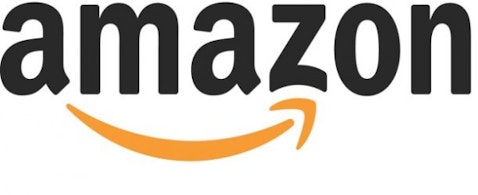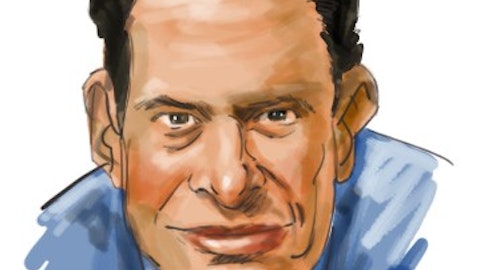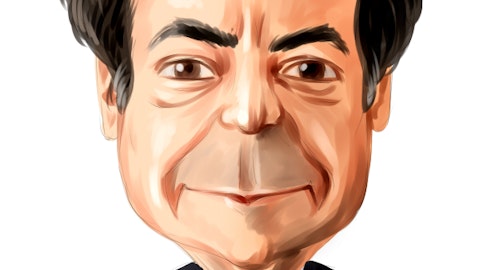Amazon (AMZN) has its hands in a lot of pies right now. In addition to its online marketplace, Amazon offers its Kindle e-reading tablets, media downloads and streaming television shows and movies. Amazon also has been offering cloud computing services to consumers and businesses alike. There is even talk that Amazon, which is number one amongst online retailers in terms of customer loyalty and number two amongst tablets, may be getting into the original content business like so many other video services have lately, such as Netflix (NFLX) and Hulu.

On the one hand, Amazon is building an ecosystem, much like Apple (AAPL) did. Apple’s devices share material (e.g. documents, music, videos, photos) seamlessly through its iCloud service so that when you add a contact on your iPad, you can see it on your MacBook, or when you take a picture on your iPhone you can show it off on your iMac, or you can work on a document at home on your iMac, edit it on the run with your laptop, then show it off on your iPad. It’s all pretty slick and it is one of the main reasons that once you go “Mac” you never go back.
It’s all pretty similar with Amazon, with a few key differences. You can play your music from your Amazon cloud on your Kindle or on anything device that has a browser or start reading a book on your laptop then take it with you on your Kindle. Amazon even offers an additional perk – it lets Kindle users with Prime membership borrow books for free. Prime membership costs $79 a year, but the first year is free for Kindle buyers. Membership entitles users to free two-day shipping and a range of free streaming videos and shows, in addition to the access to the Kindle borrowing library. The perks are enough that Amazon was able to sell 5.5 million of its newest Kindle – Kindle Fire – in just one quarter.
However, for all its success, Amazon does have some issues to overcome. First, consider Kindle Fire. Amazon put a price point on the newest addition to the Kindle family of $199. The Kindle Fire is Amazon’s answer to the tablet market. Sure, Amazon still sells plain Kindles that are primarily suited for reading only, but the Kindle Fire costs only a little more and does almost just as much – almost. At roughly 7 inches, its screen is considerably smaller than Apple iPad’s 9.7-inch screen and it doesn’t have nearly the functionality. The iPad’s $499 price tag may have been enough to entice some people to choose the more basic Kindle Fire but now that Apple has launched its new iPad and is selling its iPad2 for $399, that could all change.
Next, there are antitrust issues to consider. Apple and five of the biggest publishing houses in the US have been put on notice by the US Justice Department for ebook price collusion. Although Amazon has not been named yet, there are those, like hedge fund manager Bill Ackman, who think that Amazon deserves some antitrust attention. “$9.99 for a book is a great proposition, as it affords a reader hours upon hours of entertainment,” Ackman said on CNBC’s Squawk Box in reference to Amazon’s Kindle platform. “In lieu of Apple and iPad, what would there stand in the way of Amazon then turning around and raising prices? I wonder why the matter has not yet received some antitrust attention.” And, Ackman isn’t the only hedge fund manager to have his doubts about Amazon.
George Soros, Ken Heebner, Andreas Halvorsen and Julian Robertson each sold out of their respective positions in Amazon during the fourth quarter. Hedge fund managers have an edge when it comes to knowing what stocks are worth the risk. They have, in some cases, billions of dollars in assets under management that they have to protect and grow, so the stakes are high, but they also have teams of people keeping track of the markets and analyzing every move. Granted, different hedge funds follow different strategies, but when several start selling off a stock at the same time, there is probably cause to worry – or at least be cautious.
And, that is certainly the case with Amazon.
Amazon recently traded at $184 a share. Analysts expect, on average, that the stock will reach $217.54 in the next year, which would represent a one-year return of over 18% – if they are right. We have our doubts.
While Amazon has strong revenue growth, good cash flow and fairly reasonable debt, its earnings per share leaves something to be desired and its return on equity is dwindling – suggesting weakness within the company. Its net income has also decreased significantly, falling almost 58% from the same quarter last year ($177 million vs $416 million). The company also has a low quick ratio of 0.79, suggesting that satisfying short-term cash needs could be strained. Amazon’s stock performance is no better. Its 50-day moving average is falling, as is its 200-day moving average, suggesting a weak downward trend – just enough to lose money but not enough to make shorting the stock worth it. Netflix is similar to Amazon in terms of valuation, a very risky bet. On the other hand Apple and Google are trading at very attractive multiples for high growth companies. Google’s forward PE ratio is around 17 vs. less than 12 for Apple. We have been aggressively recommending Apple since last summer and despite its recent gains the stock is still attractively priced. Google is also a great bet. Hedge funds agree with us. Apple and Google are the two most popular stocks among hedge funds.
We recommend avoiding Amazon right now. The company could bounce back – in fact, it probably will – but at its current share price there isn’t enough meat on the bone to make a long position worth the risk.





